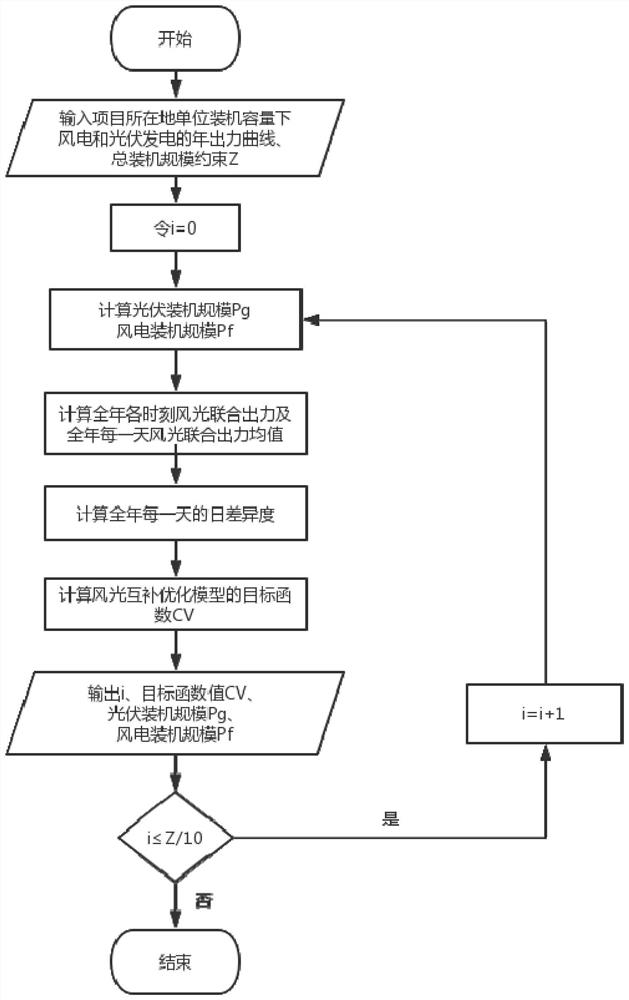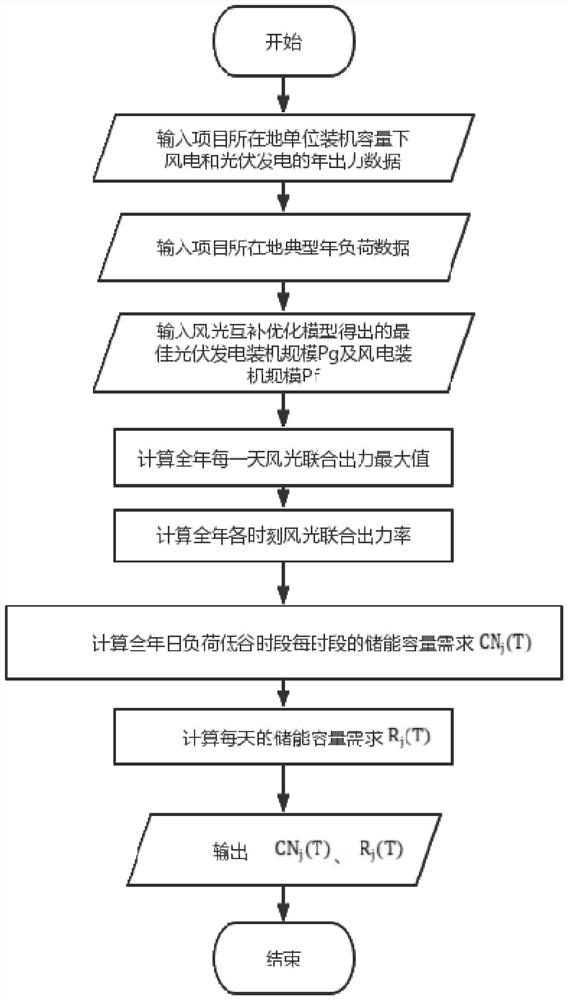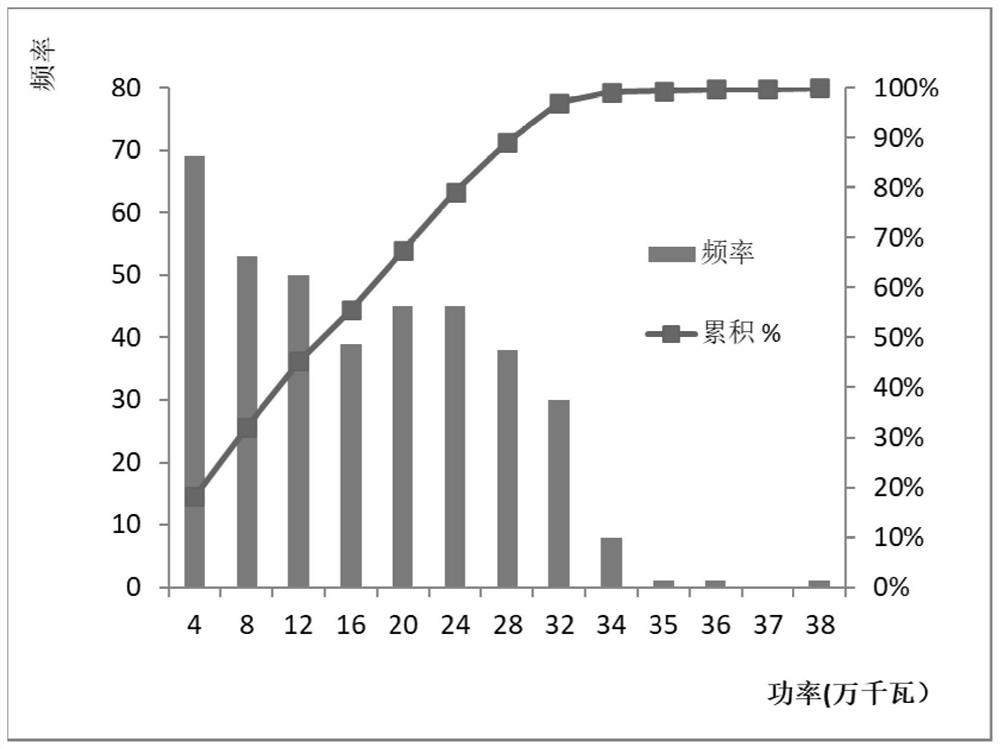Wind-solar-storage multi-energy complementary capacity optimization method considering installation scale constraint
A technology of installed capacity and energy storage capacity, applied in the field of wind-solar-storage multi-energy complementary capacity optimization, can solve problems such as affecting economic benefits, increasing project investment, and insufficiency, so as to reduce investment, reduce energy storage configuration scale, and improve utilization. effect of age
- Summary
- Abstract
- Description
- Claims
- Application Information
AI Technical Summary
Problems solved by technology
Method used
Image
Examples
Embodiment 1
[0051] A wind-solar-storage multi-energy complementary capacity optimization method considering the constraints of installed capacity, including the following steps:
[0052] Obtain the wind resource and solar energy resource data of the project location, the output data of wind power and photovoltaic power generation under the unit installed capacity at each time of the year, the historical load data and the daily minimum load rate value throughout the year;
[0053] Wind-solar optimization and complementary system; the wind-solar optimization and complementary system specifically takes the total installed capacity of wind and solar as a constraint, the installed scale of wind power and photovoltaic power generation as a variable, and uses the complementary characteristics of wind and solar as the optimization goal to smooth the combined output of new energy sources to build a wind-solar complementary optimization model. Calculate the optimal installed scale of wind power and ...
Embodiment 2
[0057] Referring to Fig. 1, a wind-solar storage multi-energy complementary capacity optimization method considering installed capacity constraints, on the basis of Embodiment 1, the wind-solar optimization complementary system is specifically:
[0058] Taking the total installed capacity of wind and solar as a constraint, the installed scale of wind power and photovoltaic power generation as a variable, and using the complementary characteristics of wind and solar to smooth the combined output of new energy as the optimization goal, the objective function CV of the wind and solar complementary optimization model is constructed:
[0059]
[0060] Among them, CV j is the difference between the wind-solar joint output and the daily average joint output on the jth day of the year;
[0061] The degree of difference CV j Specifically:
[0062]
[0063] Among them, P Lj (t) is the joint output value of the wind and the wind at the jth day and time t of the whole year; is ...
Embodiment 3
[0077] refer to figure 2 , a wind-solar storage multi-energy complementary capacity optimization method considering the constraints of the installed capacity. On the basis of the second embodiment, the energy storage capacity configuration system is specifically:
[0078] According to the optimal installed capacity of wind power and photovoltaic power generation, the wind and solar combined output at each time of the year is per-unitized, and the combined wind and solar output rate at each time of the year is obtained.
[0079]
[0080] Among them, P Ljmax is the maximum combined output on the jth day of the year;
[0081] The difference between the combined wind-solar output rate and the daily minimum load rate during the daily load trough period is the energy storage power demand for this period of time: M j (T):
[0082]
[0083] Among them, T is the load trough period on the jth day of the whole year; F minj is the minimum load rate on the jth day;
[0084] I...
PUM
 Login to View More
Login to View More Abstract
Description
Claims
Application Information
 Login to View More
Login to View More - R&D
- Intellectual Property
- Life Sciences
- Materials
- Tech Scout
- Unparalleled Data Quality
- Higher Quality Content
- 60% Fewer Hallucinations
Browse by: Latest US Patents, China's latest patents, Technical Efficacy Thesaurus, Application Domain, Technology Topic, Popular Technical Reports.
© 2025 PatSnap. All rights reserved.Legal|Privacy policy|Modern Slavery Act Transparency Statement|Sitemap|About US| Contact US: help@patsnap.com



